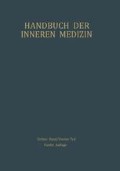Zusammenfassung
Isolierte Lageanomalien des Kolons sind nicht bekannt. Sie sind eine zwingende Folge der Lageanomalien des gesamten Magen-Darm-Traktes, die sich wiederum aus Störungen der physiologischen Darmdrehung ableiten lassen. In der 4. Fetalwoche befindet sich das primitive Darmrohr in der medianen Sagittalebene. Ende der 4. Fetalwoche kommt es zu einer Drehung von Magen und Duodenum und anschließend zu einer Drehung der primitiven Nabelschleife um die A. mesenterica cranialis. Die Drehung erfolgt um 3 × 90° (also 270°) im Uhrzeigergegensinn. In der 10.–12. Fetalwoche ist die Drehung vollendet, das Mesocolon ascendens und descendens ist an der hinteren Bauchwand verklebt. Das Zökum liegt im rechten Unterbauch, die Einmündung des terminalen Ileums in das Kolon geschieht von links nach rechts. Nach Grob (1957) sind bei der Entstehung einer Lageanomalie des Magen-Darm-Traktes drei Mechanismen auseinanderzuhalten: eine Stöning der fetalen Darmdrehung, eine Stöning des Eigenwachstums einzelner Darmabschnitte und schließlich eine mangelhafte Verklebung des Mesokolon.
Access this chapter
Tax calculation will be finalised at checkout
Purchases are for personal use only
Preview
Unable to display preview. Download preview PDF.
Literatur
Benz K, Wenz W (1963) Das Doppelflintensyndrom am Colon. Bruns Beitr Klin Chir 206:385
Bodian M, Stephens FD, Ward BCH (1949) Hirschsprung’s disease and idiopathic megacolon. Lancet 1:6
Bodian M, Carter CO, Ward BCH (1951) Hirschsprung’s disease: its natural observations. Lancet 1:302
Daum R, Schüler HW, Tonnesen H, Holschneider A, Hecker WCh (1972) Duplikaturen des MagenDarm-Traktes, Beitrag zum Ileus im Neugeborenen-, Säuglings- und Kindesalter. Z Kinderchir [Suppl] 11:64
Davis WS, Allen RP, Favara BE, Slowis ThL (1974) Neonatal small left colon syndrome. Am J Roentgenol 120:322
De Lorimier A A, Benzien SR, Gooding ChA (1971) Segmental dilatation of the colon. Am J Roentgenol 112:100
Duhamel B (1956) Une nouvelle opération pour le mégacôlon congenital: L’abaissement retrorectal et transanal du colon et son application possible au traitement de quelques autres malformations. Presse Med 64:2249
Ehrenpreis T (1945) Megacolon in newborn: clinical and radiological study with special regard to pathogenesis. Acta Paediatr 32:358
Fitz RH (1884) Persistent omphalo-mesenteric remains, their importance in the causation of intestinal duplications, cyst formation and obstruction. Am J Med Sci 88:30
Genton N, Pometta D (1959) A propos d’un cas de colon aganglionaire: Maladie de Hirschsprung sans megacolon. Helv Paediatr Acta 14:383
Gerald B (1965) Aganglionosis of the colon and terminal ileum: Long term survival. Am J Roentgenol 95:230
Grob M (1957) Lehrbuch der Kinderchirurgie. Thieme, Stuttgart
Gulotta F, Straaten G (1977) Hirschsprungsche Krankheit mit gleichzeitiger Aganglionose und sog. neuronaler Kolondysplasie (Dysganglionosis colica). Z Kinderchir 20:42
Hecker WCh (1960) Congenitale Colonatresie. Ein klinischer Beitrag zum Ileus in der Neugeborenenperiode. Chirurg 31:405
Hecker WCh, Daum R, Maier WA (1970) Die Eingriffe im Säuglings- und Kindesalter. In: Breitner B (Hrsg) Chirurgische Operationslehre. Urban & Schwarzenberg, München Berlin Wien
Heiss WH, Schütze U (1975) Atresien des Dickdarms. Kinderarzt 6:386
Heiss WH, Daum R, Meinel A (1972) Spontane Perforationen des Digestionstraktes bei Neugeborenen. Saling E (Hrsg) Perinatale Medizin III. Thieme, Stuttgart
Holschneider A (1977) Elektromanometrie des Enddarms. Urban & Schwarzenberg, München Wien Baltimore
Louw IH (1964) Investigations into the etiology of congenital atresia of the colon. Dis Colon Rectum 7:471
Maclver AG, Whitehead R (1972) Zonal colonic aganglionosis, a variant of Hirschsprung’s disease. Arch Dis Child 47:233
Meier-Ruge W (1972) Fortschritte in der Diagnose des aganglionären Segments. Paediatr Paedol [Suppl]2:55
Morger R (1972) Zur Bedeutung der rectalen Saugbiopsie beim aganglionaren Segment. Paediatr Paedol [Suppl] 2:48
Nixon GW, London VR, Stewart DR (1975) Intestinal perforation as a complication of the neonatal small left colon syndrome. Am J Roentgenol 125:75
Okamoto E (1961) Neuropathological and embryological studies on the etiology of aganglionic megacolon. Med J Osaka Univ 13:285
Okamoto E, Ueda T (1967) Embryogenesis of intramural ganglia of the gut and its relation to Hirschsprung’s disease. J Pediatr Surg 2:437
Payr E (1910) Über eine eigentumliche, durch abnorm starke Knickungen und Adhaesionen bedingte gutartige Stenose der Flexura lienalis und hepatica coli. Verh Dtsch Kongr Inn Med 27:276
Perrot A, Danon L (1972) Obstruction intestinal de cause rare chez un nourrisson. Zit. Nach Maclver AG, Arch Dis Child 47:233
Rehbein F, Wernicke HH (1955) Erfahrungen bei der Operation der Hirschsprungschen Krankheit. Bruns Beitr Klin Chir 191:18
Schärli AF, Kiesewetter WB (1969) Ano-recto-sigmoid pressure studies as a quantitative evaluation of postoperative continence. J Pediatr Surg 5:694
Soave F (1963) Eine neue Methode zur chirurgischen Behandlung des Morbus Hirschsprung. Zen- tralbl Chir 88:1241
Stephens ED (1953) Congenital imperforate rectum, rectourethral and rectovaginal fistulae. Aust NZ J Surg 22:161
Swenson O, Bill AH Jr (1948) Resection of rectum and rectosigmoid with preservation of the Sphincter for benign spastic lesion producing megacolon. Surgery 24:212
Willich E (1972) Röntgendiagnostik der Hirschsprungschen Krankheit im Neugeborenenalter und bei atypischen Fällen. Paediatr Paedol [Suppl] 2
Zuelzer WW, Wilson JL (1948) Functional intestinal obstruction on a congenital neurogenic basis in infancy. Am J Dis Childh 75:40
Editor information
Editors and Affiliations
Rights and permissions
Copyright information
© 1982 Springer-Verlag Berlin Heidelberg
About this chapter
Cite this chapter
Daum, R. (1982). Kinderchirurgisch bedeutsame Krankheitsbilder des Kolons. In: Bläker, F., et al. Dickdarm. Handbuch der inneren Medizin, vol 3 / 4. Springer, Berlin, Heidelberg. https://doi.org/10.1007/978-3-642-67945-2_9
Download citation
DOI: https://doi.org/10.1007/978-3-642-67945-2_9
Publisher Name: Springer, Berlin, Heidelberg
Print ISBN: 978-3-642-67946-9
Online ISBN: 978-3-642-67945-2
eBook Packages: Springer Book Archive

